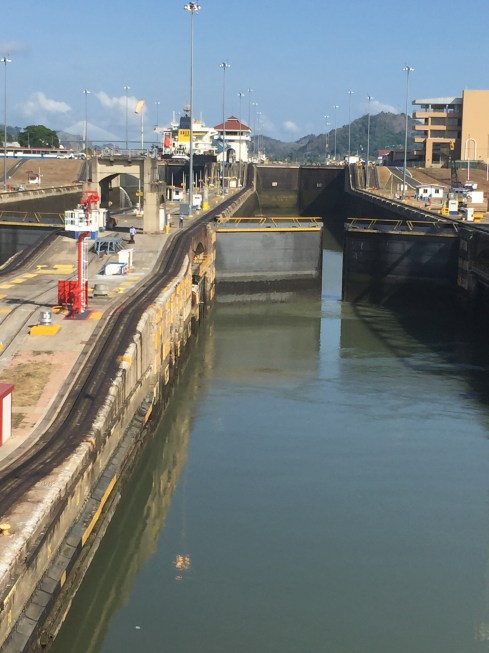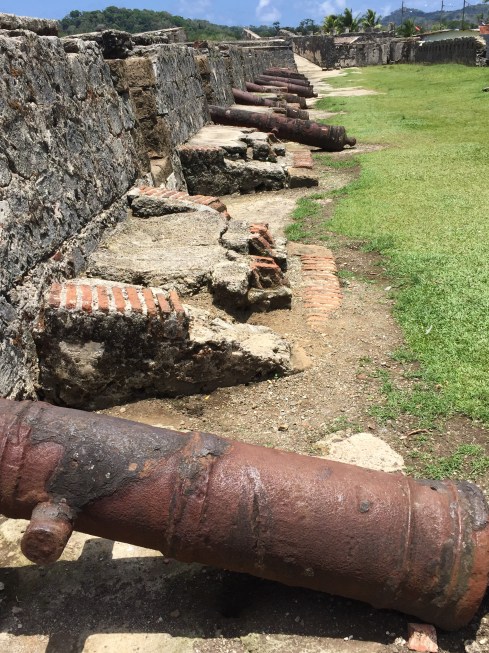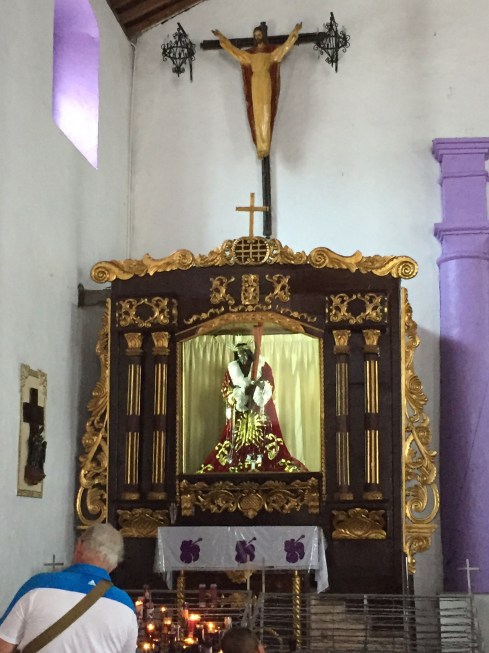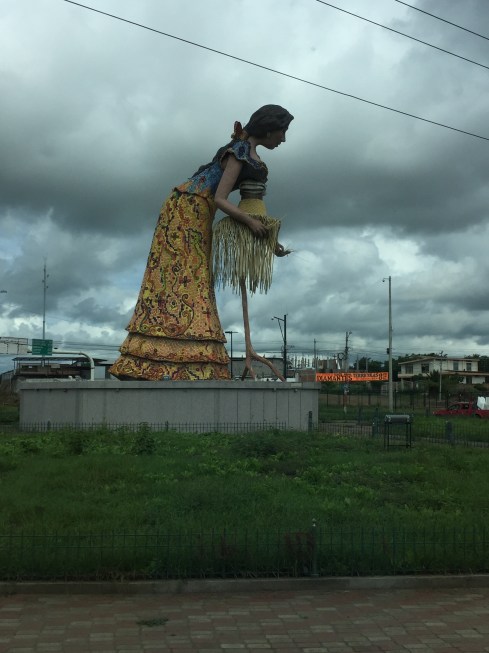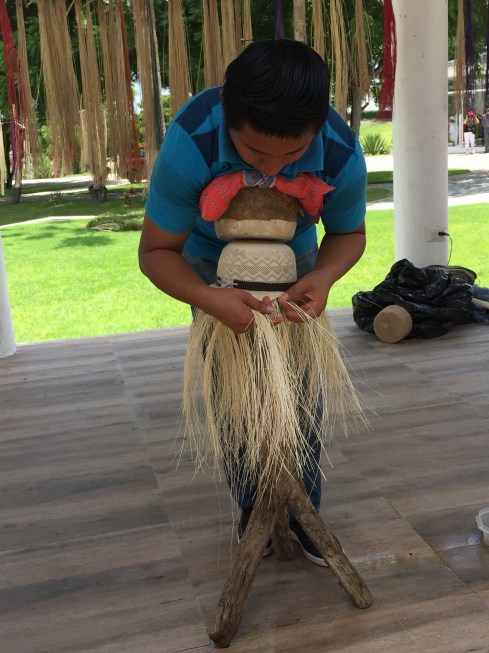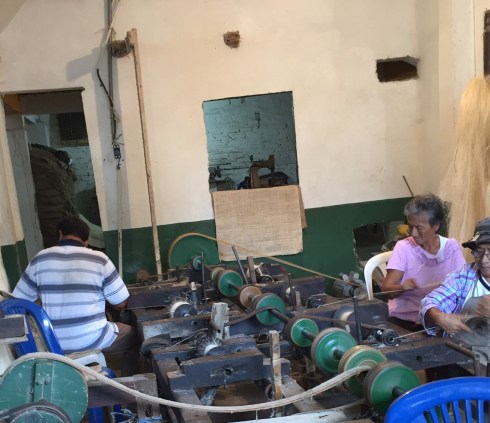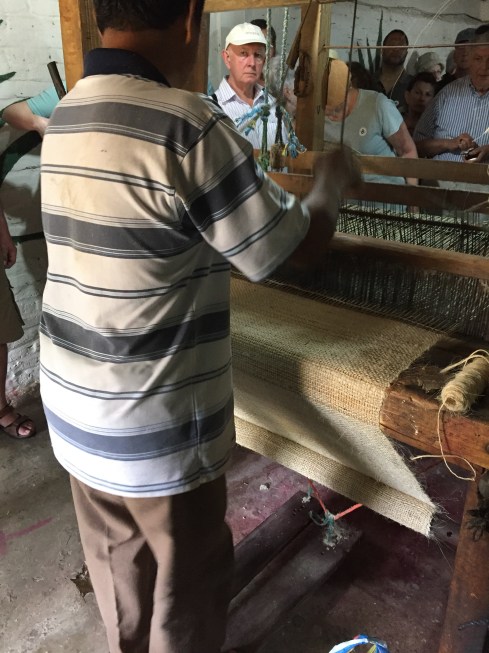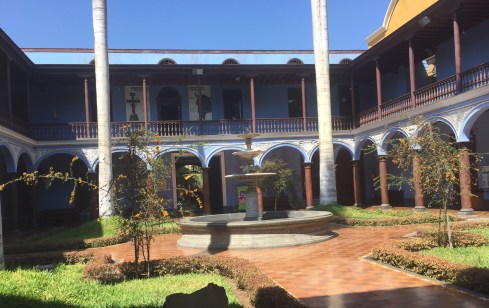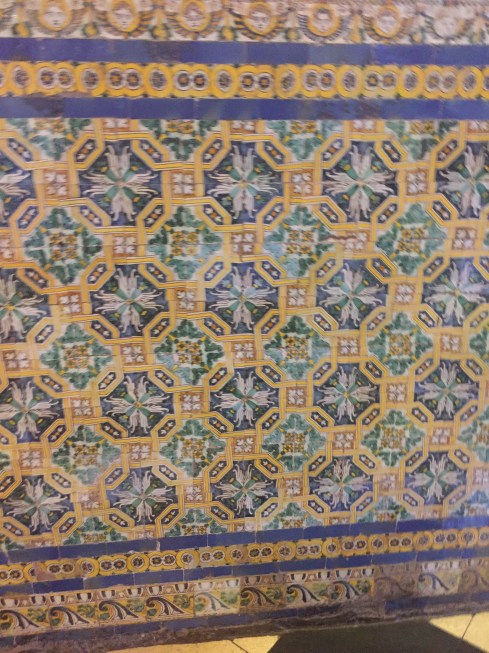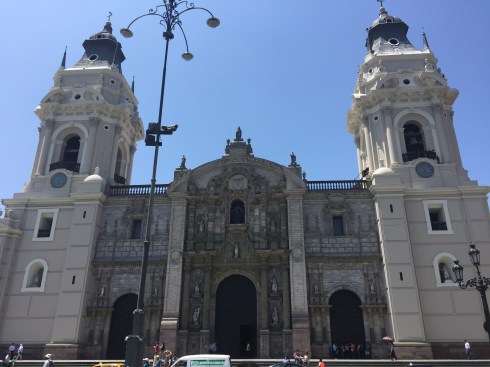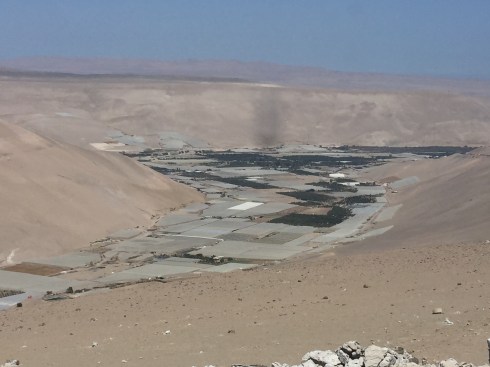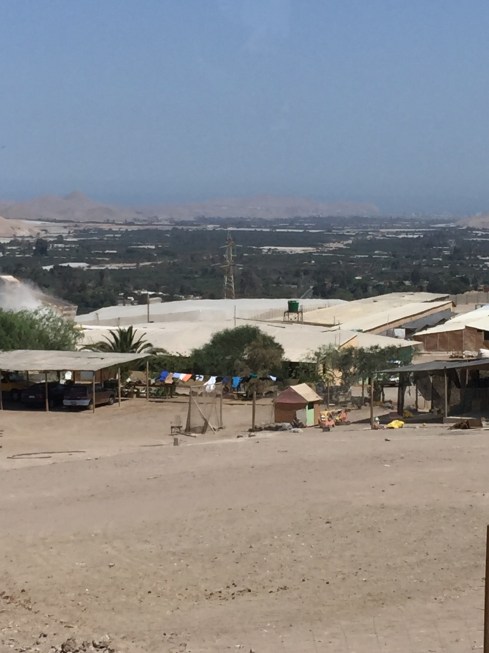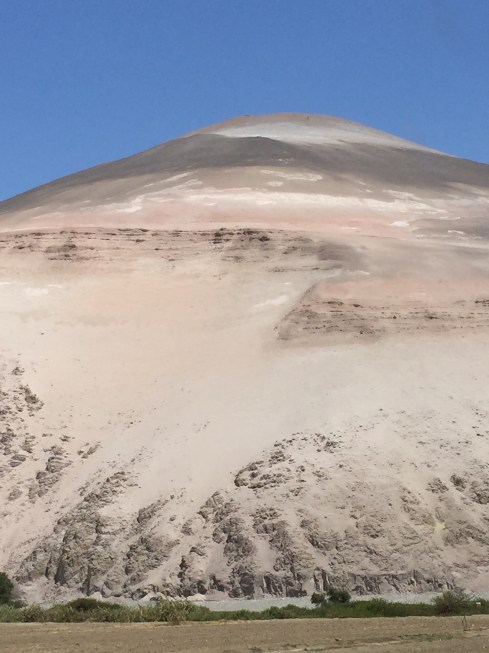Finally, we reached the Panama Canal. The entire focus of this trip was to pass through the Canal locks and to see the workings of this major engineering endeavor. Of course the ports of call were interesting. But this was the impetus of our trip.
We reached the entrance of the Canal early in the morning and entered the first lock of Mariflores at about 9 am. It was a Party atmosphere as everyone was on deck to view the lock process.
It is intriguing. First lines have to be attached to the electric, ‘mules,’ a small train engine, which helps guide the boats through the Canal.
The water used in the Canal is all fresh water from Gatun Lake and the locks are filled by gravity. There are no pumps that are needed. It helps that Panama has nine months of Rain each year with well over 200 inches of precipitation.
Since we started by going up, 85 feet over three locks, it was fun to watch the water bubble up and slowly lift our cruise ship! We went through the first two licks, then traveled a short distance to the Pedro Miguel lock, then into the pass where we passed the mountains that has to be cut away to form the Canal.
Gatun Lack was larger than I anticipated and filled with lovely islands and birds. A beautiful, peaceful sanctuary.
Finally to the Gatun Locks, where the process repeated, but which slowly lowered us through the three locks to the Atlantic Ocean.

Two boats in the locks going in opposite directions. The big beige walk is actually a giant freighter
Then on to Colon, Panama. The next morning we returned to the Gatun Locks by land and were able to see the lock process from a different view. Still intriguing and amazing to watch the boats side by side, one going up and the other going down in the two separate lanes of the Gatun Locks.
But our trip to Panama was not complete till we traveled to the small town of Portobello. It is here that the Spanish originally brought the gold that they stole from Peru and other South American countries and took overland for the trip back to Spain.
It is also here that the Pirates, among them Sir Francis Drake (who died there) and Henry Morgan, attacked the Spanish empire and stole the gold. We visited the Custons House, the destroyed fortifications and the Church that houses the famous Black Jesus that accidentally was delivered to Portobella. Once there it was destined to stay as each time the town attempted to send it back a big storm occurred.
It was wonderful to see the technology of the Canal used to connect the Pacific with the Atlantic. But also wonderful to see a bit of the history of this region of Panama.

